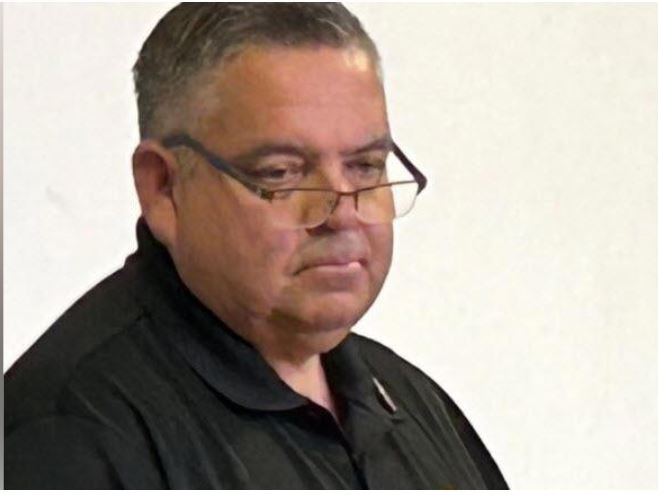Southboro's cache of seized drugs stretches back to 1992
BYLINE: Shaun Sutner TELEGRAM & GAZETTE STAFF,
Link to Article
Southboro, MA
WATCHDOG

Southboro Police Chief Jane Moran says she has been directed by town officials to defer to a lawyer for the town on all matters relating to the stockpile of drug evidence. (T&G Staff/RICK CINCLAIR)
SOUTHBORO — The Police Department in this affluent MetroWest town has stockpiled hundreds of seized drugs from as long ago as 1992, an unusual practice that has raised suspicion that drugs could be missing or at risk of theft.
Seized evidence samples that are being kept at the police station include heroin, cocaine, marijuana and Ecstasy, prescription medications OxyContin, Vicodin and Xanax, as well as paraphernalia such as crack pipes and grinders, according to a list of 745 seized items obtained by the Telegram & Gazette under the state's Public Records Law.
The 16-page list includes drugs seized between 1996 and April 2013, but a list of items recently submitted to the office of Worcester District Attorney Joseph D. Early Jr. also includes drugs seized as far back as 1992.
Unlike most police departments, which destroy unneeded drug evidence on a regular schedule after seeking a judge's approval as required by state law, the Southboro police have apparently held onto their entire cache of evidence, even after a suspected theft of drug evidence in 2004.
State laws that govern the destruction of drug evidence do not require drugs to be eliminated on a specific timetable.
Chief Jane Moran declined to answer questions about the stockpiled drug evidence, saying she has been directed by town officials to defer to a lawyer for the town on all matters relating to the evidence. Most of the evidence has accumulated since Chief Moran took charge. A department veteran, she was appointed chief in 2009.
After repeated inquiries from the T&G about the evidence cache, the town's labor counsel, Joshua R. Coleman, said police officials earlier this month submitted a request to the district attorney to destroy 386 pieces of evidence. Under the law, district attorneys then bring the paperwork to a judge, who can order that the evidence be destroyed, or, in some cases, preserved.
As for the remaining samples, Mr. Coleman indicated that some 162 items are related to open cases, including non-criminal marijuana citations. Police departments customarily hold onto drug evidence while cases are pending and for the 30-day appeal period after verdicts.
“There hasn't been any destruction orders in a long time,” Mr. Coleman acknowledged. “It's not quite as simple as going to a judge, It's a complicated process.”
But, Mr. Coleman said, “the department is looking to move forward.”
Mr. Coleman added that an already involved process, requiring much paperwork, has been further complicated by the case of former state public health crime lab chemist Annie Dookhan, who was indicted in December on 27 charges of tampering with drug evidence.
Since Ms. Dookhan was arrested last July, the state has imposed a moratorium on the destruction of all drug evidence held by local police departments and the state police while state police officials develop, for the first time, specific guidelines for the process.
The stockpiling of evidence at the Southboro police station was brought to light by a former Southboro police sergeant and president of the local officers union, Michael M. Crenshaw, who left the department because of a disability in 2011 and was later terminated for insubordination.
He has since become a persistent critic of the department.
Among the numerous public records Mr. Crenshaw has received after filing public requests under the law is a 2004 report by a state police sergeant on the case of 14 one-gram bags of cocaine that went missing from Southboro police custody after an arrest.
The cocaine was never found, no suspect or cause was pinpointed, and the state police investigator determined there was no cause for criminal action because there were no obvious signs of tampering or forceful entry into a temporary storage locker or the evidence room.
However, the report recommended four changes to evidence procedures at the department, but those proposed changes were blacked out for security reasons in the version provided to Mr. Crenshaw.
Mr. Coleman, the town's lawyer, said former Chief William Webber, who has since died, tightened evidence-handling procedures in the wake of the 2004 incident. Mr. Coleman declined to elaborate what improvements were made, citing security reasons.
Two audits of the evidence inventory have been done over the years, according to documents obtained by Mr. Crenshaw.
Mr. Crenshaw, who was on the police force at the time, said a video surveillance camera was installed outside the evidence room, but he maintained it didn't work properly, and, in any event, only stored a day's worth of footage at a time.
Mr. Crenshaw said keeping so much evidence on hand, for so long, encourages the perception that the cache could be vulnerable to pilfering from within the department, despite the audits.
“When they lost the evidence in 2004, they should have cleaned it up. The camera outside the door was a half-hearted situation. I just think it has been mismanaged,” Mr. Crenshaw said. “That stuff should all be destroyed if it's not a current case.”
Meanwhile, while Mr. Crenshaw has complained to the district attorney's office about the drug evidence and other issues, the DA and town officials appear to be standing behind Chief Moran.
“Southboro is a very professional police department and I have full confidence in Chief Moran,” Mr. Early said in a prepared statement emailed by spokesman Paul Jarvey. “Any discussion about drug disposal until the state police determine best practices would be premature.”
Daniel L. Kolenda, chairman of the Southboro Board of Selectmen, said about the chief: “There's no issues about how she's handled evidence.
“We're happy to hear the DA's backed up what she's been saying about how she's done everything right all along with the evidence,” Mr. Kolenda added.
While the Southboro department appears to have held onto every piece of evidence it has acquired over the past two decades, other departments have procedures that make evidence destruction a routine practice.
At the Worcester Police Department, the evidence custodian and his supervisor each destroys evidence while a police official from another agency witnesses the process, according to spokeswoman Kathleen A. Daly.
“Only drugs that are used in open cases are kept in evidence until the conclusion of the case,” Ms. Daly said. “The department avoids stockpiling large quantities of drugs by destroying them on a quarterly basis.”
Leicester Police Chief James Hurley declined comment on his department's procedures, other than saying: “We do it on a regular basis.”
Wayne Sampson, executive director of the Grafton-based Massachusetts Chiefs of Police Association, noted that there are no state guidelines yet. And Donna Mooers, executive director of the Massachusetts Police Accreditation Commission, said her group has no standards for drug destruction.
Mr. Sampson echoed other police officials in saying the work of destroying drug evidence requires time and attention by local police departments.
“It's so hard to get rid of the drugs,” he said. “But once you get behind, it makes it that much harder to catch up.”

Former Southboro Police Sgt. Michael Crenshaw, shown in his Millville home, brought to light the stockpiling of evidence at the Southboro police station.
- - - - - - - - - - - - - - - - - - - - - - - - - - - - - - -
International Association for Property and Evidence
"Law Enforcement Serving the Needs of Law Enforcement"
www.IAPE.org


